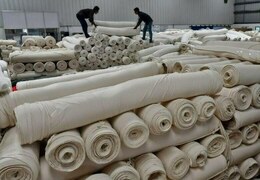The owner of the IKEA furniture brand reported a drop in annual underlying profit on Monday, hit by higher wood and metal prices. After decades of rapid growth, the world's biggest furniture brand is battling to adapt to the rise of online rivals such as Amazon and made.com, while also trying to maintain its hallmark affordability amid rising raw material and other costs.
As part of an overhaul in 2016, design, in-house production and supply chain management transferred to brand owner Inter IKEA from IKEA Group, which owns most of the stores. Inter IKEA said on Monday its net profit for the 12 months through August was 1.45 billion euros ($1.63 billion), compared with 912 million euros a year earlier, when the firm took 812 million in goodwill writedowns for the acquired businesses.
"If we took that out of the FY17 result, you get to a net result of 1.7 billion. So, we are actually dropping a bit," Inter IKEA Chief Financial Officer Martin van Dam told Reuters. Inter IKEA reported a 12 percent rise in net sales to 25.5 billion euros, but said costs - mainly for wood and metals - outpaced wholesale sales, and it had not passed them all on to franchisees.
"We see raw material and materials costs increasing. We see tariff challenges. We see salaries gradually increasing. And by that definition, we get an in-price onto our products that is challenging," van Dam said in an interview. "It would be super easy to charge the retailers with that and call it a happy day, but that doesn't work, because we want to commit ourselves to the totality of IKEA of low pricing. And by that definition we have to give up margin to be successful collectively in a franchise dimension," he said.
Inter IKEA produces around 10 percent of the range and sources the rest from external suppliers. It raised prices to franchisees by 0.2 percent, but took a 1 percent hit to its gross margin on those sales. Investments in the supply chain, range development and in new store concepts and services also weighed. IKEA has been opening city-centre showrooms to try to appeal to a growing number of shoppers reluctant to travel to its big out-of-town warehouses, while also offering services such as furniture assembly.
BR100
16,307
Increased By
236.2 (1.47%)
BR30
51,537
Increased By
1163.4 (2.31%)
KSE100
157,953
Increased By
1775.7 (1.14%)
KSE30
48,199
Increased By
520.5 (1.09%)






















Comments
Comments are closed.